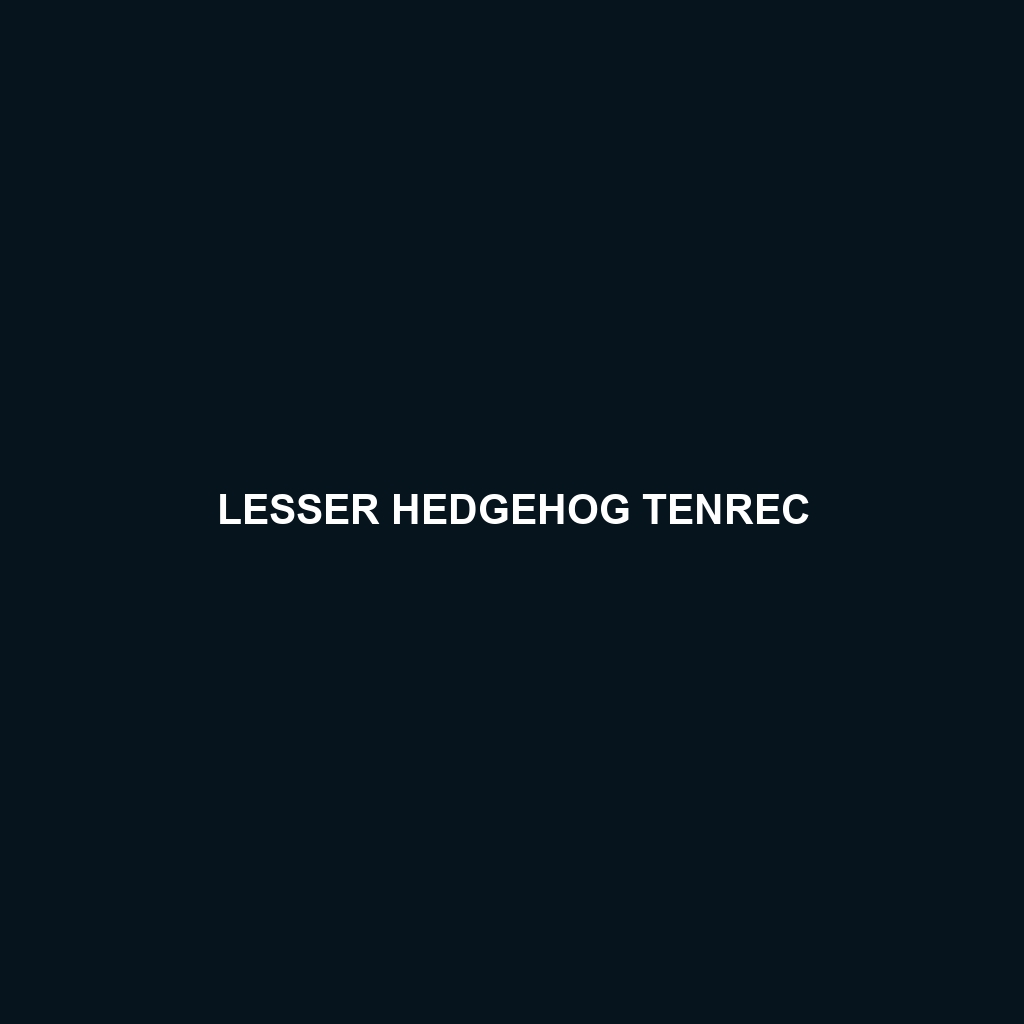Lesser Hedgehog Tenrec: A Comprehensive Guide
The Lesser Hedgehog Tenrec (Echinops telfairi) is a small, nocturnal mammal native to Madagascar. This fascinating creature, often mistaken for a hedgehog due to its spiky appearance, belongs to the family Tenrecidae. Despite its similar looks, it is not closely related to hedgehogs and represents a unique lineage of Afrotherian mammals.
Physical Characteristics
Size: The Lesser Hedgehog Tenrec is relatively small, measuring about 12-17 cm (4.7-6.7 inches) in length, with a weight ranging between 100-250 grams (3.5-8.8 ounces).
Coloration: Their coloration varies, usually featuring a mix of brown, gray, and cream tones. This helps them blend into their natural surroundings.
Special Features: The most distinctive feature of the Lesser Hedgehog Tenrec is its spiny coat, which serves as a defense mechanism. The spines are sharp and can be raised when the animal feels threatened. They also have a pointed snout and small, rounded ears.
Behaviors
Social Interactions: Lesser Hedgehog Tenrecs are generally solitary creatures, coming together only for mating purposes. They communicate through vocalizations such as hisses, clicks, and purrs.
Feeding Habits: These tenrecs are omnivores, with a diet that includes insects, small vertebrates, fruits, and plant material. Their diet can vary based on seasonal availability of food sources.
Ecological Roles: As insectivores, they play a crucial role in controlling insect populations. Their foraging habits also aid in seed dispersal and soil aeration.
Habitat
Natural Habitat: Lesser Hedgehog Tenrecs are primarily found in the dry deciduous forests and shrublands of Madagascar. They are well-adapted to a range of environments but prefer areas with ample ground cover.
Adaptations: They have adapted to their environment in several ways, including a keen sense of smell for locating food and the ability to enter a state of torpor during periods of extreme heat or food scarcity.
Adaptations
Thermoregulation: Lesser Hedgehog Tenrecs can enter a state of torpor to conserve energy during unfavorable conditions. This adaptation is crucial for surviving the dry season when food is scarce.
Defensive Mechanisms: Their spiny coat is an effective deterrent against predators. When threatened, they can curl into a ball, presenting their spines outwardly.
Sensory Adaptations: They have a highly developed sense of smell and hearing, which aids in finding food and detecting predators.
Conservation Status
Current Status: According to the IUCN Red List, the Lesser Hedgehog Tenrec is currently listed as Least Concern. However, like many species in Madagascar, they face threats from habitat destruction and fragmentation.
Fun Facts
Unique Lineage: The Lesser Hedgehog Tenrec is part of the Afrotheria clade, a group of African mammals that includes elephants and aardvarks.
Nocturnal Lifestyle: Being nocturnal, they are most active at night and have adapted their senses to thrive in the dark.
Versatile Diet: Their ability to consume a wide variety of foods makes them highly adaptable to different environmental conditions.
Low Metabolism: They have a relatively low metabolic rate, which helps them survive in areas with limited food resources.
The Lesser Hedgehog Tenrec is a remarkable example of Madagascar’s unique biodiversity. Its intriguing behaviors, distinctive physical traits, and ecological significance make it a fascinating subject for study and conservation efforts.
